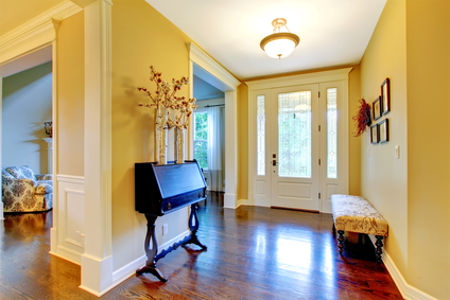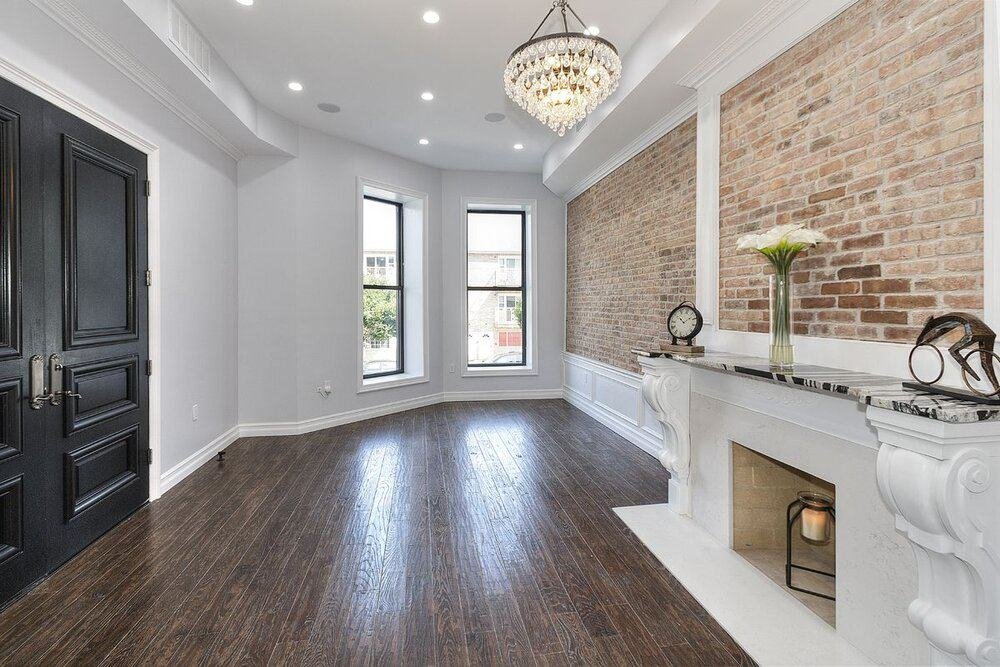Lakewood Interior Painting: Transform Your Home with Expert Painters and Services
Wiki Article
Enhance Your Inside Layout With Comprehensive Color Examination
The integration of color consultation into indoor style presents an unique opportunity to fine-tune and raise the visual and psychological vibration of an area. By engaging with a skilled shade specialist, you can navigate the complexities of color option, making sure that your options not only enhance architectural attributes yet likewise reverberate with personal style and emotional impact.Advantages of Shade Assessment

Additionally, color assessment help in optimizing all-natural light and maximizing spatial perception. Lighter shades can make a space appear even more large, while darker shades produce an intimate setting. Cleveland Metro Painting Specialists. This critical application of shade can dramatically influence the total ambiance of any interior space
Additionally, expert specialists possess a detailed understanding of existing patterns and classic standards, making certain that the picked colors will certainly remain appealing over time. This insight can conserve clients from costly redesigns in the future. Lastly, shade appointment equips clients by supplying them with a clear vision and instructions, cultivating confidence in their style choices and ultimately bring about a much more enjoyable and effective indoor design result.
Recognizing Shade Psychology
The relevance of shade psychology in interior decoration can not be overstated, as it looks into the psychological and psychological results that numerous shades can stimulate in individuals. Shades can influence mood, actions, and also efficiency, making them an important consideration in any type of layout job.For example, cozy colors such as red, orange, and yellow are commonly linked with energy and heat. They can boost sensations of excitement and comfort, making them suitable for social spaces like living rooms or cooking areas. Alternatively, awesome shades like blue, eco-friendly, and purple often tend to stimulate calmness and tranquility, making them suitable for rooms or meditation areas.
Additionally, making use of neutral tones can produce a balanced setting by allowing the bolder shades to attract attention without overwhelming the detects. Comprehending these emotional impacts enables designers to produce areas that not only look cosmetically pleasing but likewise promote emotional wellness.
Integrating color psychology into interior decoration includes a thoughtful option of hues customized to the designated function of each room, inevitably enhancing the overall experience for its passengers. This awareness is crucial for accomplishing a harmonious and practical indoor environment.
The Color Wheel Discussed
Recognizing the relationships in between colors is crucial for effective interior design, and the color wheel offers as a beneficial tool in this procedure. The color wheel, created by Isaac Newton in the 17th century, highlights the range of colors organized in a round format. It consists of primaries-- red, blue, and yellow-- that can not be produced by mixing various other shades. Second shades, formed by integrating main shades, consist of environment-friendly, orange, and purple. Tertiary shades arise from blending a primary and a second shade, causing shades such as blue and red-orange.The shade wheel aids developers grasp the connections between shades, consisting of complementary, analogous, and triadic schemes. Complementary colors, positioned opposite each various other on the wheel, create vivid contrasts that look here can invigorate a room. Comparable colors, located next to each other, supply a unified and natural appearance. Triadic systems make use of 3 evenly spaced colors, offering equilibrium and aesthetic rate of interest.
Making use of the color wheel in interior decoration not only boosts visual charm however additionally evokes certain emotions and ambiences, making it a critical referral for shade consultation. Comprehending these partnerships eventually equips designers to produce spaces that are both practical and visually fascinating.
Picking the Right Scheme
Commonly, selecting the best combination is a decisive factor in attaining a successful interior decoration job. A well-chosen color design can unify an area, improve its attributes, and stimulate preferred feelings. To start, take into consideration the purpose of the room. Various spaces offer different functions and call for palettes that show their designated usage; as an example, serene colors such as soft blues or environment-friendlies work well in bed rooms, promoting leisure.Next, take into consideration the all-natural light available. Light can considerably modify just how shades show up, so it is crucial to analyze the space at various click for info times of the day. In addition, take into consideration existing architectural aspects and home furnishings. An unified scheme must match these attributes, developing a cohesive appearance throughout the space.
When picking shades, utilize the 60-30-10 rule, which suggests that 60% of the area need to be a leading color, 30% an additional shade, and 10% an accent color. This proportion makes sure equilibrium and aesthetic passion (Cleveland Metro Painting Specialists). Ultimately, example colors on the walls before committing, as this permits you to see exactly how the colors interact with one another and the general atmosphere they develop in your interior design task.
Collaborating With a Shade Professional

When dealing with a shade professional, the procedure typically begins with a preliminary examination. During this conference, you'll discuss your vision, preferences, and the existing elements in your room. The consultant will certainly assess your needs and might advise specific shade schemes that straighten with your goals.
After establishing an instructions, the specialist will certainly give examples and visual help to help you visualize the suggested color pattern. This action is critical, as colors can show up in a different way under varying illumination conditions.
Additionally, a color consultant can direct you in selecting complementary furnishings, artwork, and accessories to integrate with your chosen scheme. By teaming up carefully, you can accomplish a polished visual that elevates your interiors and creates an inviting ambience. Inevitably, the experience of a shade consultant can substantially improve the general effect of your design project.
Conclusion
In recap, detailed shade consultation serves as a crucial tool for improving indoor style. By leveraging expert expertise of shade psychology and spatial dynamics, a tailored color combination can be created to evoke specific feelings and develop an unified atmosphere.By engaging with a seasoned color expert, you can navigate the complexities of color choice, guaranteeing that your selections not just enhance architectural features but also resonate with personal style and mental influence. It consists of key shades-- red, blue, and yellow-- that can not be developed by blending various other shades.The color wheel aids developers comprehend the relationships in between shades, consisting of corresponding, analogous, and triadic systems.When picking colors, use the 60-30-10 regulation, which suggests that 60% of the room need to be a dominant shade, 30% an additional shade, and 10% an accent shade. By leveraging expert expertise of color psychology and spatial dynamics, a customized shade scheme can be established to evoke particular emotions and produce an unified atmosphere.
Report this wiki page